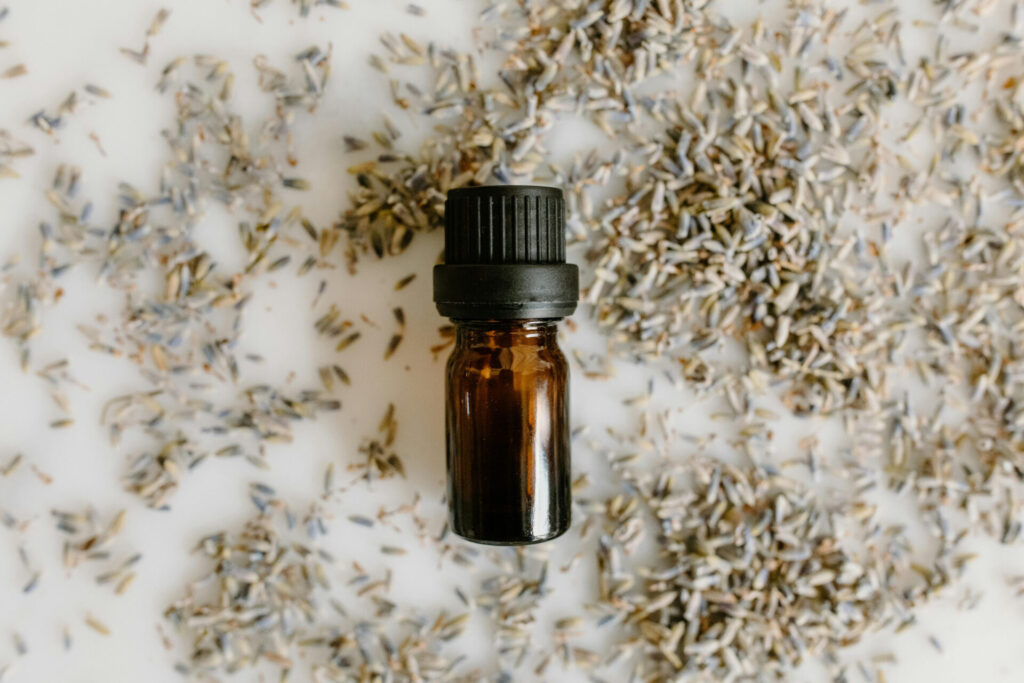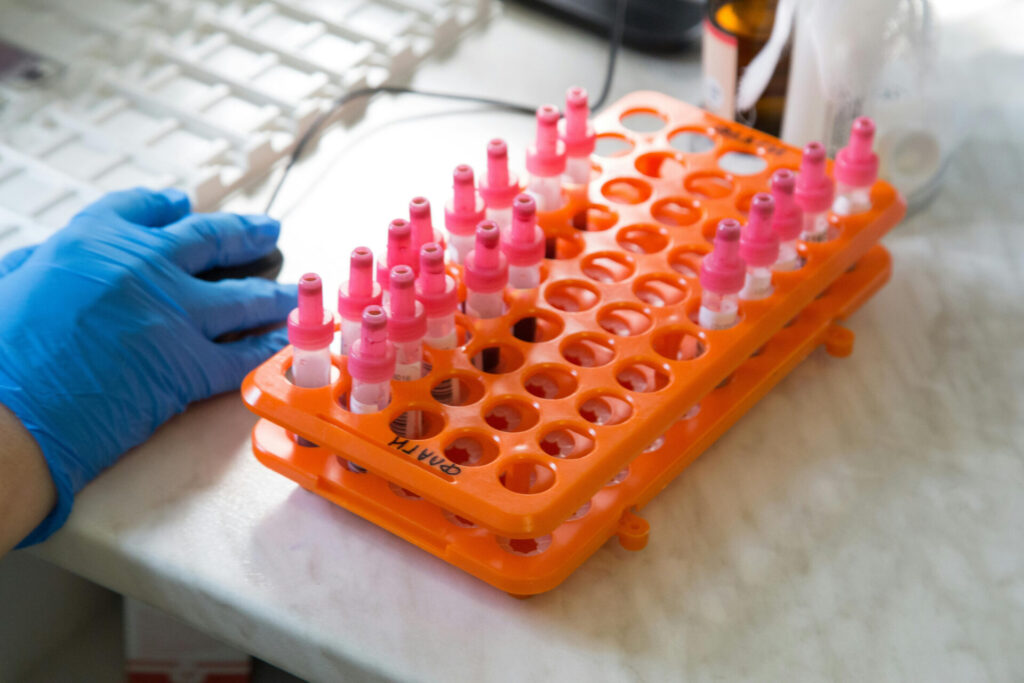If you’ve just experienced a “dropped vape in water” situation, quick and deliberate action is essential. This article provides a step-by-step rescue plan starting with immediate retrieval and power-down to avoid short-circuiting. We’ll guide you through drying, assessing damage, and recovery steps so you can attempt to save your waterlogged device.
Key Takeaways
- Act fast if your vape falls in water: Shut it off and remove the battery ASAP to prevent short-circuits.
- Thoroughly dry your vape with paper towels, rice, or silica gel, and let it sit for at least 24-48 hours before reassembling to ensure it’s completely dry.
- If you see signs of corrosion, persistent malfunction, or water under screens after a thorough dry, it’s likely time to replace your vape to avoid safety risks.
Immediate Action: What to Do Right After Your Vape Falls in Water

Have you heard about the rule for picking up dropped food within five seconds? There’s a comparable urgency when your vape device encounters water. The imperative here is to act fast—any delay increases the chances of severe harm. What should be done under these circumstances?
First off, snatch it out of the water immediately. Then – and this part is critical – turn off your vape right away. Shutting down after an unfortunate plunge can help prevent short circuits and additional damage to its electrical innards. If your vape boasts a removable battery, whip that battery out post-haste. With built-in batteries drying becomes more complex and demands extra caution. Bear in mind that electronics fare poorly with moisture as it may bridge connections unintendedly causing malfunctions or shorts.
Power Down and Remove Battery
If your vaping device has taken an unexpected plunge and you’ve managed to retrieve it, the immediate concern is avoiding additional harm. The most prudent course of action involves switching off your vape as soon as possible and taking out its power source if applicable. This step is critical because the lithium ion batteries within can react unfavorably when they come into contact with water, leading to a greater chance of short-circuiting or causing more serious damage.
Should your vape be equipped with a removable battery, make sure you extract it carefully to stop any degradation. By doing so, not only do you keep temperatures down, but also protect against potential electrical shorts in the components inside. Conversely, for devices where the battery cannot be removed easily, heightened caution during the drying process is necessary to avoid damaging these sensitive parts.
Pat Dry with Paper Towels
After you’ve turned off the device and taken out the battery, your next move should be to eliminate any remaining moisture from the vape. To do this effectively, lightly dab it with paper towels. Concentrate on drying its surface, taking care not to insert a paper towel into any of its openings which could inadvertently drive water into its internal components.
As you’re dabbing it dry, pay extra attention to areas like the battery contacts, buttons, and any visible electronics. Employ small bits of paper towel for carefully soaking up moisture from these sensitive parts. It’s crucial to remember that your vape contains an intricate web of electronic elements inside. Thus avoid using force or employing cleaning techniques with paper towels directly on them as doing so can potentially damage their circuitry.
Assessing the Damage: Internal Components and Battery Compartment
After taking immediate action, it’s important to evaluate the extent of the damage. You’ll need to inspect the battery compartment and determine whether water has reached your vape’s electronic components. To do this, search for any evidence of a watermark on your device, much like how seawater leaves behind a distinct line along the shore indicating its highest point.
Should you find that water made contact with key areas such as the chipset or other critical electronics within your device, swift and thorough drying is imperative. Remember that corrosion may set in mere hours or days following exposure to moisture—this will vary depending on how severe the damage is, how long it remained submerged if at all involved), ambient humidity conditions, as well as structural factors pertaining specifically to your vaping device. Thus, responding promptly could not be more crucial.
Check for Water in the Battery Compartment
Now that you’ve made the initial steps, it’s essential to Investigate. Start with a close inspection of the battery compartment. First, make sure to protect yourself from any possible electrical hazards. Gently remove the cover of the battery compartment using either your fingers or a screwdriver so you can scrutinize what lies within.
Once inside, search for indicators like moisture presence or corrosive damage. If your vape is equipped with a removable battery, carefully extract it and check for any signs of harm including bubbling, swelling, melting or changes in color.
Should you notice any such troubling symptoms on your removable battery, this would indicate an immediate need for its replacement.
Inspect Electronic Components
Once you’ve inspected the battery compartment, turn your attention to the vital electronic components within your vape. Damage to these core elements can significantly impair how well it works. In electronic devices, moisture exposure can induce electrochemical migration among conductors that may cause harmful short circuits.
Galvanic corrosion might occur if a thin layer of water forms a connection between two different metals. This process could rapidly corrode one metal and result in device failure due to accelerated degradation. When polymers found in electronic devices come into contact with moisture, their physical characteristics may change. Such alterations could lead to structural problems like cracking or separation under heat stress—a condition referred commonly to ‘popcorn failure.’’
Finally, closely examine key parts such as heating coils—which vaporize the e-liquid—and chipsets—challenging to dry if they become wet—as these are critical for proper functionality and particularly susceptible to water damage in vapes.
The Drying Process: Best Practices to Air Dry Completely

Once you have evaluated the extent of the damage, it is essential to proceed with drying your vape device as part of its recuperation. Here’s what you need to do:
- Gently dab dry around tiny openings like airflow and USB ports using a slim bit of tissue fashioned into a point.
- Proceed by turning and giving the device a gentle shake to help any remaining liquid escape.
- If feasible, take apart the vape so that internal components can release any trapped liquid.
Continue these measures for adequately drying out your device.
- Wipe down every external surface thoroughly, paying close attention to crevices or difficult-to-access spots where moisture might linger.
- Employ uncooked rice or use the cool setting on a hairdryer as methods to aid in drawing out leftover moisture from within.
- Position the apparatus in an environment conducive for dryness for no less than 24 hours, ensuring all residual water has time to evaporate completely.
- You might also contemplate employing a dehumidifier which can assist by withdrawing additional dampness from surrounding air and support in expediting the drying process.
It’s critical that prior reactivation of usage occurs only after allowing complete air-drying of your vape. This step is vital both for maintaining functionality at peak levels and assuring safety standards are met.
Use Absorbent Filler Material
Utilizing an absorbent filler material is a proficient method for extracting moisture from your vape’s internal components. Silica gel and uncooked rice serve as excellent substances to draw out the dampness effectively. When opting for silica gel packets, ensure you have a sufficient amount to encase the vape entirely in a container.
In the case of selecting rice as your desiccant, immerse your vape completely within a bowl brimming with uncooked rice and leave it sealed between 24 to 48 hours. This process will create an enclosed dry space that boosts the absorption of moisture by the filler material.
Let It Sit and Check Regularly
Once your drying station is ready, it’s crucial to allow the vape and its parts to rest within an absorbent substance like silica gel. It’s advised that this period lasts between 24 and 48 hours for optimal dryness.
The location where you leave the vape should be arid with good airflow, perhaps aided by a soft draft, which will help in evaporating any remaining wetness. Make periodic inspections during the drying process essential to avoid potential harm from extended exposure to the absorbing agent.
Reassembly and Testing: Ensuring Your Vape is Safe to Use

After the vape device has been thoroughly dried, it’s time to put it back together and see if your efforts have paid off. Carefully assemble the vape, making sure each component is totally free of moisture and debris from the drying process. During assembly, ensure that every part is in its proper place and firmly attached to prevent any operational failures or potential hazards.
When you are ready to power up the vape for testing:
- If possible with your model, initiate at a low-power setting.
- Gradually increase power while keeping an eye on how the device functions.
- Exercise caution throughout this test phase. Pay special attention if water immersion occurred with your vape as there may be risks of electric shock or causing additional damage to the unit.
Carefully Reassemble Removable Parts
After your vape has been submerged in water, caution is paramount during assembly. Before reconnecting the battery, confirm that it is entirely dry as this will help prevent a potential short circuit. Once all parts are dried, inspect the ends of cables and connectors for any signs of wear such as corrosion or accumulated debris.
It’s critical to adhere to certain steps following the drying process.
- Thoroughly eliminate any remnants of rice or silica gel from inside the device.
- Reattach the cartridge to its respective section on top of the battery carefully ensuring it’s secure but not over-tightened.
- Should there be concerns about damage inflicted upon the battery after submersion, opt for either replacing it with a new one or use another battery that you can verify is still functioning properly.
Test the Device Cautiously
Once you have put your vape back together, proceed carefully with testing it. It’s important to avoid inflicting Damage on the device. Pay attention to unusual noises such as a sizzling sound when trying out a vape that has come into contact with water. This could be a sign of lingering electrical problems.
Prioritize safety by making sure the vape is completely dry and checked thoroughly for any potential dangers before use to circumvent risks including electric shock. Begin using your vaporizer at its lowest wattage setting and slowly raise the power while observing its performance, which allows you to identify any malfunctions in how it operates.
Preventative Measures: Keeping Your Vape Dry

To steer clear of another ordeal with your vape and water, you should take certain precautions to protect your vaping equipment from becoming wet. Utilize protective cases specifically designed to safeguard the equipment against unintended contact with water. Opt for a vape that boasts features enhancing its resistance to water, thus adding an additional safeguard against moisture-related harm.
Keep your vape in areas free from any liquids greatly reduces chances of it being accidentally submerged or splashed on. Finally, be mindful of environments where there is a heightened risk of dropping vapes into water. Often times, taking preventive measures is indeed the most effective remedy.
Choose Water-Resistant Options
Should you have a tendency to experience spills or if your vaping habits take place close to aquatic environments, it’s worth considering the investment in water-resistant vape models. These variants are engineered with enhanced resistance against water and various liquids, which can be invaluable should they end up being dropped into water by mistake.
The market presents an assortment of such devices suited for different levels of vapers including desktop vaporizers, handheld options, and sub-ohm apparatuses. For novices, there is the beginner-friendly Geekvape AP2 900mAh Pod Kit that boasts not only its water-resistant qualities but also comes equipped with an integrated filter system. Advanced users may gravitate towards the GeekVape Aegis Solo 100W. Mod due to its ability to regulate wattage and temperature alongside ease of maintenance.
In your search for optimal protection against liquid damage, prioritize products featuring an IP rating. Take for instance the Innokin Adept Zlide kit, which possesses an impressive IP67 rating – signifying that this device can withstand submergence in one meter of water for up to half-hour durations.
Store Safely Away from Liquids
To ensure your vape remains undamaged by moisture, it’s essential to store the device in an environment that is both cool and dry. This will protect not only the battery but also keep the consistency of the vape liquid intact. Keep your vaping equipment upright at all times to avoid leaks from e-liquid, which is crucial for preserving its quality, especially when you’re storing it for a long time.
When putting away your vaping device:
- Steer clear of locations with high temperatures such as vehicles or near sources of heat. These conditions can harm both the battery and cause deterioration of your e-liquid.
- For those devices designed with extended puff capacities, make sure they are either switched off or locked if stored over lengthy periods.
- It’s recommended to keep half (50%) charge in batteries whenever possible during storage because this contributes to their longevity.
For CBD/THC vapes along with various types of vape juice and liquids: seal them tightly within containers that do not allow air entry. Then place these items in areas lacking light and warmth so as to sustain their flavor strength and effectual benefits.
When to Replace: Recognizing Unrecoverable Water Damage
Regardless of how cautious you are, there may come a point when your vape is beyond rescue. Telltale signs of irreversible water damage to look for include:
- Corrosion forming on the metal plates
- Continuous operational issues even after being affected by water
- Water marks underneath glass layers like displays, signaling that these areas have been compromised by moisture.
Should the battery within your vaping device sustain water damage, it’s imperative to immediately remove and safely dispose of it due to its potential risk as a fire hazard. Prolonged contact with water can disrupt component functionality and escalate safety dangers for users. Attempting repairs on a vape apparatus post-water exposure might prove futile and could result in permanent impairment. Such irredeemably damaged gear must be discarded following local environmental guidelines.
There are instances when discarding an extensively flood-damaged vaping device is wiser than attempting remediation. Acquiring a new unit is recommended instead.
Accidents happen! Dropped your vape in water? Don’t panic! Check out our guide to see if it’s salvageable. Plus, browse our Eightvape discount codes for great deals on a new one if needed!
Signs of Corrosion and Persistent Malfunction
The degradation of metal materials in electronic devices is often caused by a chemical reaction with water and oxygen, leading to corrosion. Evidence of this type of deterioration can be seen as a white or green powdery residue on the circuit board or ‘crusty’ patches found on metallic parts including battery connectors and charging ports.
When corrosion is detected, it Means that repairing the device may not be recommended or feasible, pointing towards the necessity for its substitution. Indeed, approximately one-fifth of all failures in electronics are due to such water-related corrosion damage, underscoring its potential for causing irreversible harm.
Safety Risks of Continued Use
Prioritizing safety is of the utmost importance. The prolonged contact between electronic devices and water may give rise to several hazards, which include:
- Electrical short circuits
- An increase in electrical resistance that could prompt overheating
- Water boiling within the apparatus, possibly resulting in explosive noises and burns to the mouth
Employing a vape following its immersion in water might invoke these identified dangers related to using a vape after it has encountered water.
Ordinarily, persistent usage of disposable vapes carries inherent threats like leakage from the device or potential combustion risks, particularly when a disposable vape has been submerged in water.
Summary
In conclusion, while a vape device taking a dive into water can be a nerve-wracking experience, it’s not always the end of the road for your device. By acting swiftly and following the right steps – from immediate action, damage assessment, drying, and assembly, to testing – you can potentially save your device from water-induced doom. That being said, prevention is always better than cure. So opt for water-resistant options and store your vape safely to avoid water mishaps. And if all else fails, know when to replace your device to ensure your safety and a smooth vaping experience.
Frequently Asked Questions
Will a disposable vape dry out?
Indeed, when a disposable vape runs out of e-liquid or its wick is no longer functional, it tends to produce a burnt flavor, indicating that it’s time to replace it with a new one.
Can you still use a dropped vape in the toilet?
Dropping a vape into the toilet could lead to immediate malfunctions or cause it to short-circuit because of water exposure, which may render it hazardous for use.
In such circumstances, it is advisable not to use the device.
What to do if liquid gets into vape?
Should your vape become infiltrated by liquid, begin by detaching the pod or tank from the apparatus. Next, envelop it in absorbent paper towel and expel any surplus liquid from the coil chamber by blowing forcefully through the mouthpiece. Clean up residual liquid and permit the device to cool off thereafter.
Does putting water in a vape ruin it?
Indeed, introducing water into a vape device can be damaging. The process of trying to vaporize water may lead to the creation of dangerously hot steam and boiling water, inhaling which could pose significant risks. The presence of water has the potential to harm the vape device itself.
What should I do immediately after my vape falls into water?
To prevent any harm, swiftly extract your vape from the water, promptly turn it off and if you can, take out the battery.





